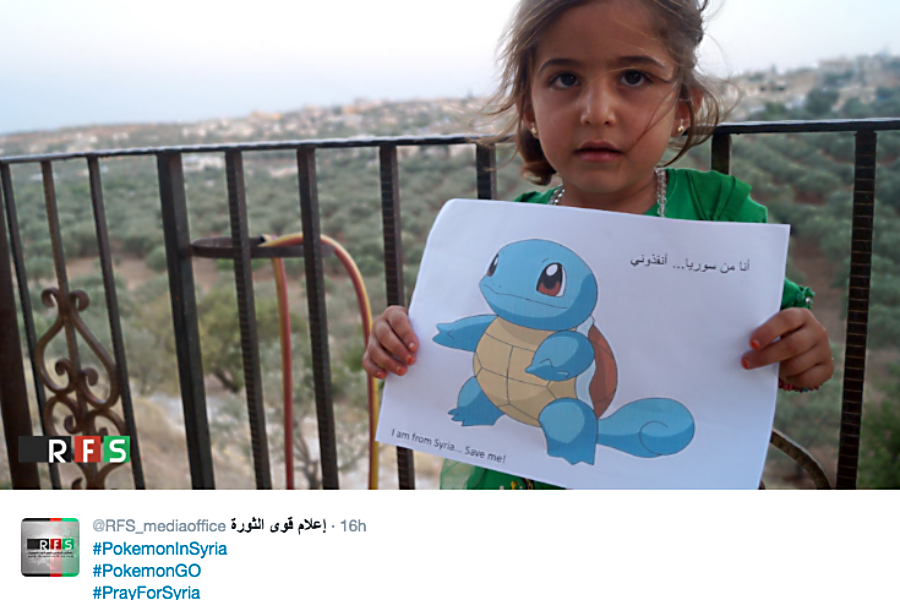Why are Syrian children holding photos of Pokemon Go characters?
Loading...
In a month filled with elections, terrorism, a tribunal and a coup attempt, there has been one more light-hearted phenomenon making news and engrossing millions – Pokemon Go.
The Nintendo app, which had nearly 8 million American downloads in its first week, has sparked a burst of news from privacy scares, to fatwas, to players falling off cliffs, and, now, a cry for the world not to forget about the children of Syria.
The Revolutionary Forces of Syria Media Office, an organization of pro-opposition journalist-activists, has been using the craze, and its Twitter hashtag, #PokemonGo, to raise awareness about the continued plight of children living in the war-torn country. Syria is home to 4.29 million children who are currently living in poverty, displacement, or near violence within its borders. A million of those children are outside areas where aid workers regularly reach.
The media campaign aims to remind the world of that reality. Playing on the fact that users have to go to the real-world location where the Pokemon are in order to catch them, the media campaign pictures children in Syria with digitally added Pokemon. One caption reads: “I am from #Syria come to save me!!!”
Other Tweets simply show children holding up what appear to be printed photos of Pokemon creatures with hashtags #PokemoninSyria and #PrayforSyria. The backgrounds range from desolate to war-torn and the children are unsmiling.
Photos have been a powerful tool for raising awareness about the plight of Syrian children during the course of the on-going five-year humanitarian crisis and civil war in the country. The image of Alan Kurdi, the 3-year-old boy who drowned during a Mediterranean crossing, went viral and caused an outpouring of international support for refugees.
But as resolution evades the conflict, Syria’s children continue to grow in unstable and sometimes violent circumstances.
UNICEF estimates that more than 80 percent of the 7.5 million Syrian children in and out of the country have been “harmed by war.” Two million of the nearly 5 million Syrians who have left the country are children, some of them unaccompanied. Access to education has plummeted: All but 3 percent of primary school-aged children were enrolled in school prior to the conflict. There are now 2.6 million children who are no longer in school. Similar limitations effect access to health care and safe drinking water.
Other problems, such as child labor and teen marriage have risen in the vacuum of safety and security for the domestic population and refugees.
UNICEF and other aid groups call for both donations and letters to governments in order to generate more aid for the children, but both of these require interest from a public who is able to give.
While impact will be hard to gauge, it appears that that the Revolutionary Forces of Syria Media Office hopes to jolt that public into awareness, using the juxtaposition of the privilege of playing smart-phone generated Pokemon with the deprivation of shelter, schooling, and safety that Syria’s children face.







